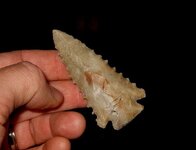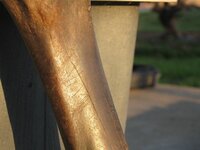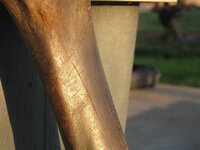lostlake88
Hero Member
IMO this is a knife. A cut stone used to process food. I just read a post on an archaeology forum ( edu site) that serrations were optimal for penetration. I think they would slow the projectile. I think a frictionless (if thats a word) projectile was used.
Attachments
Upvote
0











